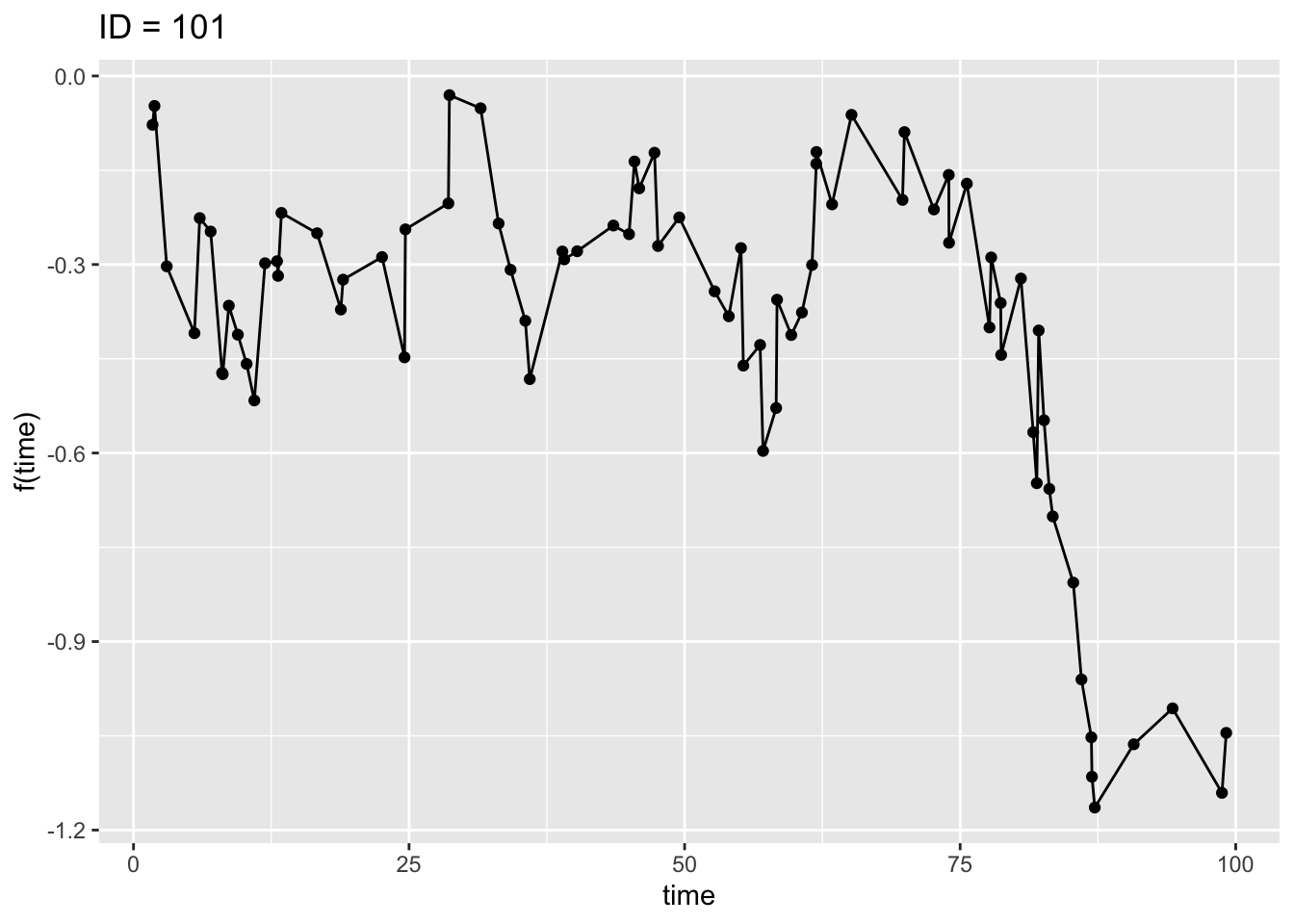Read the full article at https://rviews.rstudio.com/2021/05/04/functional-data-analysis-in-r
Suppose you have data that looks something like this.
 This plot might depict 80 measurements for a participant in a clinical trial where each data point represents the change in the level of some protein level. Or it could represent any series of longitudinal data where the measurements are take at irregular intervals. The curve looks like a time series with obvious correlations among the points, but there are not enough measurements to model the data with the usual time series methods. In a scenario like this, you might find Functional Data Analysis (FDA) to be a viable alternative to the usual multi-level, mixed model approach.
This plot might depict 80 measurements for a participant in a clinical trial where each data point represents the change in the level of some protein level. Or it could represent any series of longitudinal data where the measurements are take at irregular intervals. The curve looks like a time series with obvious correlations among the points, but there are not enough measurements to model the data with the usual time series methods. In a scenario like this, you might find Functional Data Analysis (FDA) to be a viable alternative to the usual multi-level, mixed model approach.
This post is meant to be a “gentle” introduction to doing FDA with R for someone who is totally new to the subject. I’ll show some “first steps” code, but most of the post will be about providing background and motivation for looking into FDA. I will also point out some of the available resources that a newcommer to FDA should find helpful.
FDA is a branch of statistics that deals with data that can be conceptualized as a function of an underlying, continuous variable. The data in FDA are smooth curves (or surfaces) in time or space. To fix a mental model of this idea, first consider an ordinary time series. For example, you might think of the daily closing prices of your favorite stock. The data that make up a time series are the individual points which are considered to be random draws from an underlying stochastic process.
Read on at Introduction to Functional Data Analysis with R · R Views